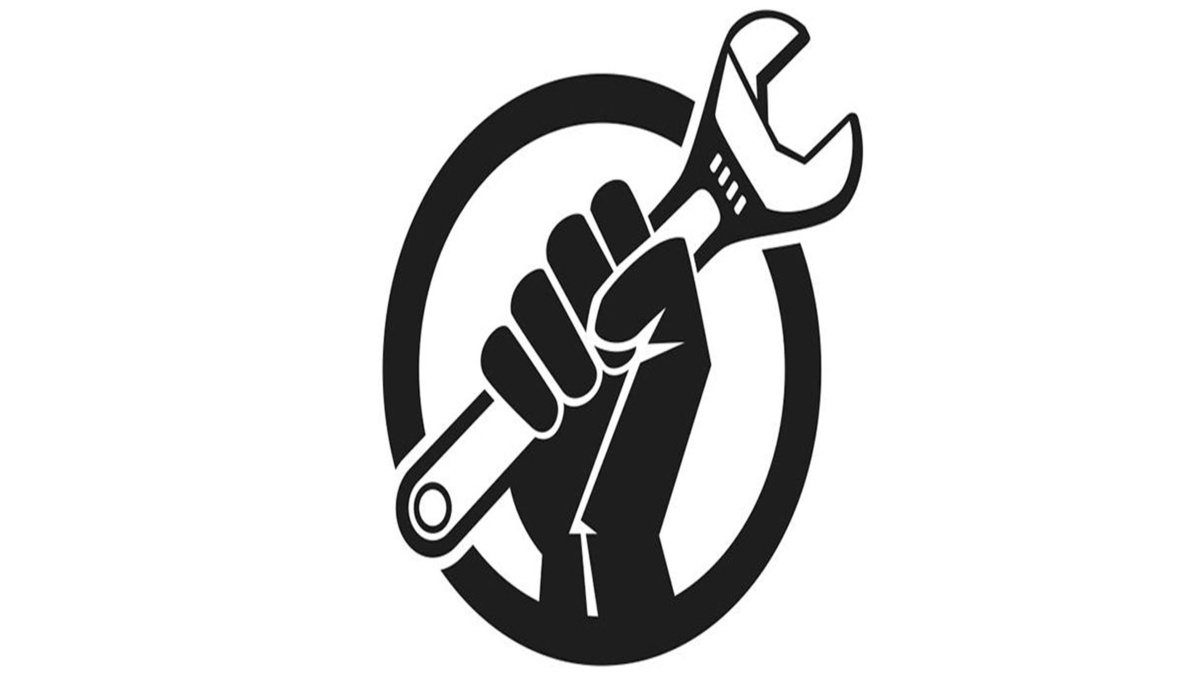INTRODUCTION
The whole world is, and has been for some time in a state of war between the forces of light and darkness. With the on-going novel Covid-19 and with the onset work from home culture, people in the cities are surrounded by electrical gadgets. Electronic gadgets like television, mobile phones, laptops, washing machines etc. can be purchased easily through e-commerce websites with the help of a single click. The average consumer purchases electronic gadgets, knowing fully that it will start showing signs of fault after a particular period of time. Marketing and advertising units of the companies sell these products as ‘resistant to daily wear and tear’. They emphasize durability; however the industry thrives on not promising long lasting products they sell. Every year, companies such as Apple, Samsung etc. launch upgraded versions of their mobile phones. There are times when the upgrade is not even necessary but the craze and hype of such mobile phones encourages the companies to move further with the technological advancements. With the release of upgraded versions, not only does the market value of the older versions go down but also internal technical problems start popping up after a certain period of time. Companies deliberately have been indulging in such practices as a part of their marketing strategy to sell their latest products. As the device gets old, there are times when we want to fix the problem or replace the original parts but they are not accessible in the local market. In the end, the consumer is left with the option of visiting the company’s store where the cost of repairing or replacement of spare parts makes it an expensive affair. Consumers are left with the option of buying a new product rather than spending a hefty amount on repairs.
In an attempt to balance the rights of societies vis-a-vis the companies, a ‘Right to Repair’ movement is picking up pace recently, at the global level.
WHAT IS RIGHT TO REPAIR?
The movement traces its roots back to the early dawn of the computer era in the 1950s. In recent years, countries around the world have been advocating to pass effective ‘Right to Repair’ laws. The idea originally originated from the USA where the Motor Vehicle Owners’ Right to Repair Act 2012 was enacted and Massachusetts became the first state to implement the law. Under this law, manufacturers were required to provide the necessary documents and information to allow anyone to repair their vehicles. The goal of the movement is to get companies to make spare parts, tools and information on how to repair devices available to its customers to increase the lifespan of products and also make the process of repair for out of warranty products and replacements cost effective. The legislation will include not only the hardware but also the batteries, memory and processing power of the device. For instance, every year, screen damage from mishandling of phones amounts to 71% of phone repairs in India and around 50 million people get their phone screens repaired in the US every year. The right becomes important because customers around the globe spend huge amounts on the repairs of faulty devices. Repair chargers are kept high to encourage replacements. As such products increasingly depend on cloud-based software code for their basic functionality, device makers have even greater power to restrict repairs. Components like batteries or certain irreparable and irreplaceable parts that are powered by chips force the owner to dump their devices. That ultimately makes a device impossible to repair and it forms a huge part of e-waste that is overall detrimental to the environment, causes health problems to human beings and wastage of natural resources.
Manufacturing of electronic devices is a highly polluting process. For instance, a data released by Apple shows that mining and manufacturing of iPhones contribute to 83% of heat trapping emissions in the atmosphere.
CULTURE OF PLANNED OBSOLESCENCE
The term ‘planned obsolescence’ was pointed out by an American industrial designer in the 1950s as a marketing practice in which manufacturers artificially shorten product life cycles and spur customers to buy new products every few years. There are different ways in which planned obsolescence can be implemented. The main motive behind this practice was to extract profits for the companies by leaving no choice with the customer but to purchase a new product. For example, a printer’s ink cartridges cannot be used after a certain threshold because of a chip present inside it. In 2017, Reddit users complained through blog posts about Apple’s practice of intentionally slowing down the processors of iPhones with weak batteries after they updated their phones with the latest version. However, many customers were satisfied that the only way to enhance performance was to buy a new model. Apple later admitted that its iOS software automatically detected aging batteries and reduced the processor speed to prevent the device from unwanted shutdowns. In March 2018, Apple Inc finally agreed to pay $113 million to settle a series of lawsuits filed against it regarding this issue.
RIGHT TO REPAIR IN THE UNITED STATES
As of 2021, almost each of 50 U.S. states have proposed legislation to the right-to-repair act, however, only the state of Massachusetts passed a law regarding the same. The Motor Vehicles Owners’ Right to Repair Act passed in 2012 required automobile manufacturers to provide necessary documents to allow third-party technicians to repair their vehicles. The law is being applied to most of the states in the U.S. though it is limited to Massachusetts only. The focus of the proposed bill varies in each state. For instance, the proposed bill concentrates on agriculture-related equipment in the states of Florida and South Carolina, while in California the focus is on medical equipment. In July 2021, Joe Bidden signed an executive order directing federal agencies to promote competition in the U.S. economy and called on the Federal Trade Commission(FTC) to force tech companies to allow consumers to fix their own electronic devices like laptops, mobile phones, cars, washing machines etc. either themselves or giving it to a technician of their choice. Certain companies have challenged the law and the possible future amendments regarding access to electronic and mechanical repair data. They argue that these amendments in law could lead to a threat to serious cyber security of the device.
RIGHT TO REPAIR IN EUROPE
The Right to Repair law in the U.K. came into force on July 1, 2021 that made mandatory for manufacturers to make spares available to both consumers and third-party repair technicians. The U.K. has kept its promise made to European Union prior Brexit to implement rules aimed at cutting energy and bills. The aim of the new rules is to extend the lifespan of products by making spare parts available within two years of an appliance going on sale, and up until either seven or ten years after the product has been discontinued, depending on the part. Some parts will only be available to professional repairers, while others will be available to everyone. The new regulations include product categories like refrigerators, washing machines, dishwashers, electric motors, external power supply, electric motors and televisions. This does not include mobile phones, laptops and tablets and it is a matter of concern as the European countries account for one of the largest producers of e-waste in the world. In the U.K., energy labels of A+, A++ and A+++ prescribed by the European Union have been replaced by the A-G scale with a higher standard for each grade so that few grades make it to A group. Rest of the European countries will follow the E.U. rules and regulations. A two year window is given to the manufacturers to make the necessary changes and abide by the new legislation. The legislation is considered as a positive step in reducing e-waste by encouraging repairing of devices instead of dumping in the scrap.
RESPONSE FROM TECH GIANTS
The right to repair movement is growing at great pace and legislation has been proposed in a couple of countries. The countries that have implemented the laws will allow an independent third party repairer to have access to the manufacturer’s parts, manuals and schematics for mobile phones, heavy equipments and other appliances. The biggest concern among manufacturing tech giants like Apple, Microsoft, Samsung, Tesla etc. is the infringement of intellectual property rights. Revealing their intellectual property or trade secrets and making it accessible to the general public or independent third party repair services could lead to exploitation by hackers and illegal interception can cause a risk to the personal information of the user. Co-founder of Apple, Steve Wozniak supported the right to repair whereas Apple has often been criticised for allowing repair of its devices by their technicians thus creating a monopoly. Companies are of the view that the customer or the third party repairer can fix the product’s hardware but they cannot access the software, which is designed taking in consideration the safety norms and environmental regulations. Allowing untrained or unauthorised third parties could possess critical risks to communication and impact connectivity networks whereas modifying software can endanger the operator and might lead to non compliance of safety standards.
INITIATIVES TAKEN BY TECH COMPANIES
Companies opposing the right to repair understand the need of such legislation from an environmental perspective and are working towards providing greater durability to their products. For instance, Apple has agreed on providing genuine parts and equipment to the third party technicians if they complete the company’s certification course. This step will expand Apple’s repairing business in a lot of countries. Microsoft has also upgraded the battery and hard drive of its third-generation laptops after it was criticised for making it next to impossible to replace the battery in older models. Some companies have started working towards making their products carbon neutral and adopting new business models to optimise their service structure in a way to improve revenues. They will also increase their operational efficiency and enhance the overall customer experience.
RIGHT TO REPAIR IN INDIA
In India, currently, there’s no legislation or any provision dealing with ‘Right to Repair’ but the judgement of Competition Commission of India, in the case of Shamsher Kataria v Honda Siel Cars India Ltd. is treated as a turning point wherein, 14 automobile manufacturing companies were held liable for engaging in anti- competitive practices and abusing their dominant position, by only selling spare parts only to authorized dealers and not to independent markets. The CCI order, enabled consumers to make a choice between independent mechanics and authorized dealers and to help independent mechanics to provide aftermarket services and ensure healthy competition in the market. India is world’s third largest contributor to e-waste, behind U.S. and China. Earlier, urban areas were the biggest contributors to e-waste but due to pandemic, mobile phone revolution in the rural areas has added some more waste to the existing pile. India has a legal framework to manage e-waste problem since 2011. The e-waste (management and handling) rules addresses not only to handle the waste in an environmentally friendly manner, but also has laid down rules about its transportation, storage and recycling. These regulations have had little impact and a strict law is needed for proper implementation.
CONCLUSION
The Right to Repair is a keen battle between the customer and the manufacturer. The right to repair can apply to any industry. With people across the globe becoming dependent on technology and electrical devices, countries that are proposing the ‘Right to Repair’ laws have different goals to meet such as e-waste, sustainability, carbon neutral goals etc. In foreign countries, independent repair shop owners are among the most vocal supporters for this legislation because they would be the one to gain the most out of this campaign. It’s a win-win situation for consumers if the proposed laws help in ending monopoly and make the repair information available in the public domain.










